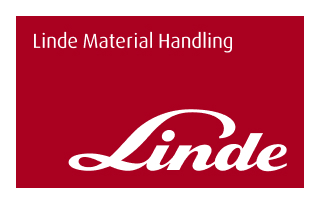Forklifts are essential for efficient materials handling in warehouses, construction sites, and logistics operations. Understanding key forklift terminology can help operators, managers, and business owners ensure safety, compliance, and optimal performance. This guide covers essential forklift terms, including types of forklifts, basic components, and operational factors.
Types of Forklifts and Materials Handling Equipment (MHE)
Forklifts come in various types, each designed for specific tasks and environments. Common types include:
- Counterbalance Forklift – The most common type, featuring a weight at the rear to balance heavy loads at the front.
- Reach Truck – Ideal for narrow aisles and stacking at heights.
- Pallet Jack (Electric or Manual) – Used for moving pallets over short distances.
- Order Picker – Designed for picking individual items from racking systems.
- Rough Terrain Forklift – Equipped with large tyres for outdoor and uneven surfaces.
- Telehandler – Features an extendable boom for lifting loads to greater heights.
Basic Forklift Components
Every forklift consists of essential parts that ensure its functionality.
- Mast – The vertical assembly that raises and lowers loads.
- Carriage – The platform that holds the forks and attachments.
- Forks – The horizontal arms that lift and carry loads.
- Counterweight – A weight at the rear that balances the lifted load.
- Overhead Guard – A protective structure that shields the operator from falling objects.
- Hydraulic System – Powers the lifting and tilting functions.
Forklift Mast Types
The mast determines how a forklift lifts and lowers loads. Common types include:
- Simplex Mast – A single-stage mast with limited lifting height.
- Duplex Mast – Two-stage lifting system, offering higher reach.
- Triplex Mast – Three-stage mast, common in warehouses for stacking high.
- Quad Mast – Four-stage mast for maximum lift height and compact storage.
Forklift Features
Modern forklifts come with various features to enhance safety and efficiency:
- Tilt Function – Allows the forks to tilt forward or backward for load stability.
- Side Shift – Moves the forks left or right without repositioning the forklift.
- Load Backrest – Prevents loads from falling backward onto the operator.
- Speed Control – Regulates movement for safe handling in different environments.
Forklift Dimensions
Understanding forklift dimensions is crucial for operational efficiency:
- Overall Width – Determines clearance for narrow aisles.
- Lift Height – Specifies how high the forks can raise a load.
- Turning Radius – Affects manoeuvrability in tight spaces.
- Load Centre – The distance from the forks' front edge to the load’s centre of gravity.
Forklift Stability, Manoeuvrability, and Gradeability
Forklift stability is key to preventing tip-overs and accidents:
- Centre of Gravity – Maintains balance by keeping the load within the forklift's stability triangle.
- Manoeuvrability – Depends on turning radius and steering capabilities.
- Gradeability – The forklift’s ability to climb inclines safely.
Forklift Tyre Types
The right tyres impact traction, stability, and performance:
- Pneumatic Tyres – Air-filled and ideal for outdoor or rough surfaces.
- Solid Rubber Tyres – Puncture-resistant and suited for indoor use.
- Polyurethane Tyres – Lightweight and durable for smooth warehouse floors.
- Non-Marking Tyres – Designed for indoor environments to prevent floor damage.
Pre-Operational Inspections for Most Forklifts
Regular pre-operational checks, different for each model and manufacturer, ensure safety and efficiency. Generally, operators should inspect:
- Battery Condition – Check charge levels and cable connections.
- Tyres – Look for wear, damage, or proper inflation (for pneumatic tyres).
- Hydraulic System– Ensure no leaks in hoses and cylinders.
- Brakes and Controls – Test stopping power and steering response.
- Warning Signals and Lights – Confirm that alarms and lights are functional.
By understanding forklift terminology and best practices, operators and businesses can enhance safety, efficiency, and compliance in their operations. Whether selecting the right forklift or performing routine inspections, a solid grasp of these terms ensures smooth materials handling.
If you're looking to purchase or hire a forklift, you can view our range in the link below.
VIEW OUR FORKLIFTS

